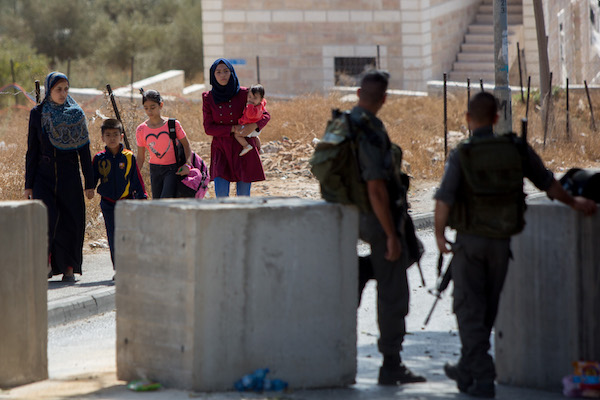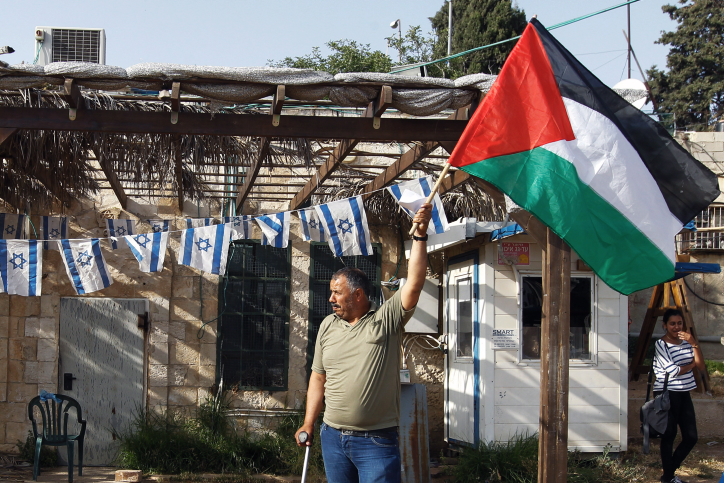The goal of Israel’s policies in East Jerusalem is to shrink the size of the city’s Palestinian population. Here’s how.
By Yaël Ronen

More than 300,000 Palestinians live in East Jerusalem today. The vast majority are not citizens of Israel but permanent residents, who may naturalize in accordance with the Citizenship Law. For many Palestinians living in East Jerusalem, their residency status is more important than citizenship. This is because the government is obligated to respect and protect the civil rights of everyone present within its borders, not just its citizens; and its obligation to ensure social and economic rights, like education and social security, hinge on residency, not citizenship. However, because the residency status of Palestinians in East Jerusalem is not secure, they lack security in the rights to which they are entitled.
The status of Palestinians living in East Jerusalem was formally stated in the Awad case in 1989. Mubarak Awad was born in East Jerusalem in 1943, and registered in the city’s population registry as a resident in 1967. In 1970 Awad moved to the United States. In 1987 he tried to return to Jerusalem but was denied entry to Israel by the Interior Ministry, which claimed that his residency had been invalidated. In ruling on Awad’s petition, the Israeli High Court of Justice held that the legal status of Palestinians in East Jerusalem was that of permanent residents. Permanent residency is contingent upon actually living in the country, and individuals who live elsewhere, as Awad did, lose their status as permanent residents.
The treatment of East Jerusalem Palestinians as ordinary permanent residents is problematic both in principle and in practice. In principle, the status of permanent residents presupposes citizenship in another state, to which they may return and which would be obligated to accept them. This poses a problem for stateless individuals, who are not citizens of any country; if they lose their residency status, they remain with no legal status whatsoever. This is precisely the situation of East Jerusalem Palestinians: they are not citizens of any country that could take them in were they to lose their residency.
There are those who claim that East Jerusalem residents deprived of their residency status could “go to the Palestinian Authority.” However, Israel cannot simultaneously regard the West Bank as a destination for migration and object to it acquiring full independent statehood. Such a claim would also invite the possibility that Jewish residents of Europe whose rights were violated be told to “go to Israel” instead of being able to fight for their rights.
The Interior Ministry’s policy also raises a practical problem: under normal circumstances, residency expires when individuals seek to return to the state after an absence of seven years or more, if in the meantime they had made their home elsewhere. In East Jerusalem, the situation is flipped: the question is not what happens when individuals leave the city, but whether they can prove that they live in it in the first place. Whenever Palestinian residents of East Jerusalem come into contact with Israeli government authorities, they must prove that Jerusalem is still their “center of life” — it is not enough that they are listed as residents in the state registry, and that they are not registered as having exited Israel’s borders.
That Palestinians in East Jerusalem are constantly required to prove that they still live in the city is the product of Israel’s explicit aim, since 1967, to maintain a Jewish majority in Jerusalem. Over the years, Israel has used a number of methods to achieve this goal: encouraging Jews to move to the city, incentivizing Palestinians to move to the West Bank, and placing severe restrictions on Palestinian residential or other construction in East Jerusalem. The constant demand that Palestinians in East Jerusalem prove they live in the city enables the government to shrink the Palestinian population in the city, at least formally. For example, according to data provided by the Interior Ministry, in 2016 the government declared the expiration of 94 persons’ residency, only two of whom lost their residency while being outside of Israel. In other words, 92 persons lost their residency while still in Israel.

Proving that they live in Jerusalem would not be a problem for Palestinians residing in East Jerusalem if it were not for the lack of building permits and the absence of a formal land registry in the city’s eastern neighborhoods; these make it difficult to procure documents that would prove residency, such as municipal property tax returns and electricity and water bills. Moreover, actual residence in Jerusalem is a necessary condition (but not a sufficient one) for establishing that the city is one’s “center of life’. Many Palestinians have in fact been forced to move beyond Jerusalem’s municipal boundaries due to increasingly difficult living conditions within them, particularly since the construction of the separation barrier. This move is often only a matter of meters with the same neighborhood, but it is nonetheless a move with significant legal consequences.
In March of 2017 the Israeli High Court Justice issued a decision that many consider a turning point. At issue was the request of Akram Abed Al-Hak to return to East Jerusalem and regain the status of permanent resident. Al-Hak was born in East Jerusalem in 1959, and moved to the United States with his parents in 1971. He attempted to returned to Jerusalem in 1989, and, like in the case of Mubarak Awad, the Interior Ministry refused to renew Al-Hak’s residency. Over the course of several years, Al-Hak visited Jerusalem numerous times, often for extended periods; he married twice, and both his wives and children live in Jerusalem. Since 2007, he has lived illegally in Jerusalem. In 2014 he petitioned to have his permanent residency restored; his request was denied. In the decision on his appeal in 2017, Justice Mazuz observed, in an aside, that it was the government’s responsibility to take into consideration “the unique situation of the residents of East Jerusalem as indigenous residents—as distinct from those who acquire permanent residency following migration to Israel.”

This decision seems to mitigate the repercussion of the Awad ruling, but it is not new binding law. The court ruled that al-Hak should receive temporary residency, but on the basis of the particular circumstances of his case. While this case marks a change, it is far from a revolution.
The situation in East Jerusalem is not a matter of adding or subtracting numbers in the population registry. Whether one views Palestinians in East Jerusalem as residents fully entitled to social services from the government or as financial burden and a security risk, the erasure of Palestinians from the population registry does not make the human beings disappear; it simply slides them under the radar of the government authorities—and this does not benefit anyone involved.

